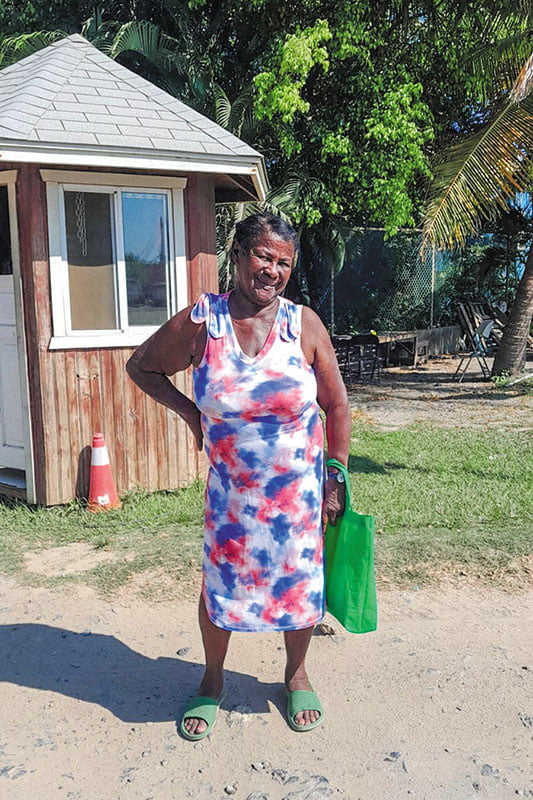
If I lived in Miami, Tampa, or New Orleans, however, the situation would be quite different. In those cities and their surrounding areas, there are many families who have a strong cultural link to either Bonacca, Roatan, or Utila, and to the Bay Islands generally. Some of them had lived there for generations.
While I am not a first-hand participant in any of the Bay Island ‘subcultures’ that have developed in these places, and in others, an important part of nurturing my sense of being from Roatan, and of being a Bay Islander, is through food. That is unsurprising, given the power of a particular taste to transport a person to another place and time.
One recent meal at my home – with the temperatures hovering around 30 degrees Fahrenheit outside – was a meatless ‘dummy’ tapado, replete with Cocos (malanga), Yucca, green bananas, and ripe plantains. Another, this while snow flurries were predicted later in the day, were the Honduran red beans, first soaked in water overnight and cooked from scratch, and white rice. As a side, there was a salad made of thinly sliced cabbage, diced tomatoes, rice vinegar, salt, and black pepper. Both meals you will agree were as simple as the day is long, but each – apart from being delicious – transported my thoughts back to Roatan and the Bay Islands.
Corn pastelitos with a filling of picked fish.
As I look back to my youth, I see a group of rowdy boys playing a pickup football match behind the Ruben Barahona public school in French Harbour. The Honduran-made leather football’s warped shape, combined with the unevenness of the gravelly field, makes a ground pass unpredictable. They could not care less. Most boys are barefoot and are a combination of boys who live on French Harbour Point and up on The Hill.
“Miss Jestane is here!” yelled one of the boys suddenly, and abruptly the game was disrupted. Miss Jestane is on her daily excursion (minus Sundays) through French Harbour. She is selling home-made baked goods. This day, she has pine cookies and pine tarts – my father’s and younger sister’s favorite – as well as square molasses cookies. No sugar-coated donuts this day, nor flour pastelitos. The sales are brisk, and Miss Jestane is soon on her way. The football match slowly begins anew, and some of the boys finish eating their snacks while chasing the warped football.
There were several other women in French Harbour who made traditional foods at home and which they sold in town door-to-door. Another would have been Miss Louise Bertram Wagner, who continues to do so even today.
These foods would have included the staples mentioned already. Others would have been corn pastelitos with a filling of picked fish cooked with onions, the fish having been caught out on the reef or in the harbour. Honduran-made hot sauces were an accompaniment for all pastelitos, with a brand name I recall being ‘Satanás’ (Satan). There would also have been freshly roasted peanuts and cashews, individual portions held in pieces of brown paper folded into cones. Then there was corn hominy – the eyes of the kernels removed individually – cooked in a thick and sweet milk base, with freshly pounded flakes of cinnamon throughout.
This was brought to the fore of my thoughts while eating a traditional island dish, all the while looking out at a northeastern winter.






